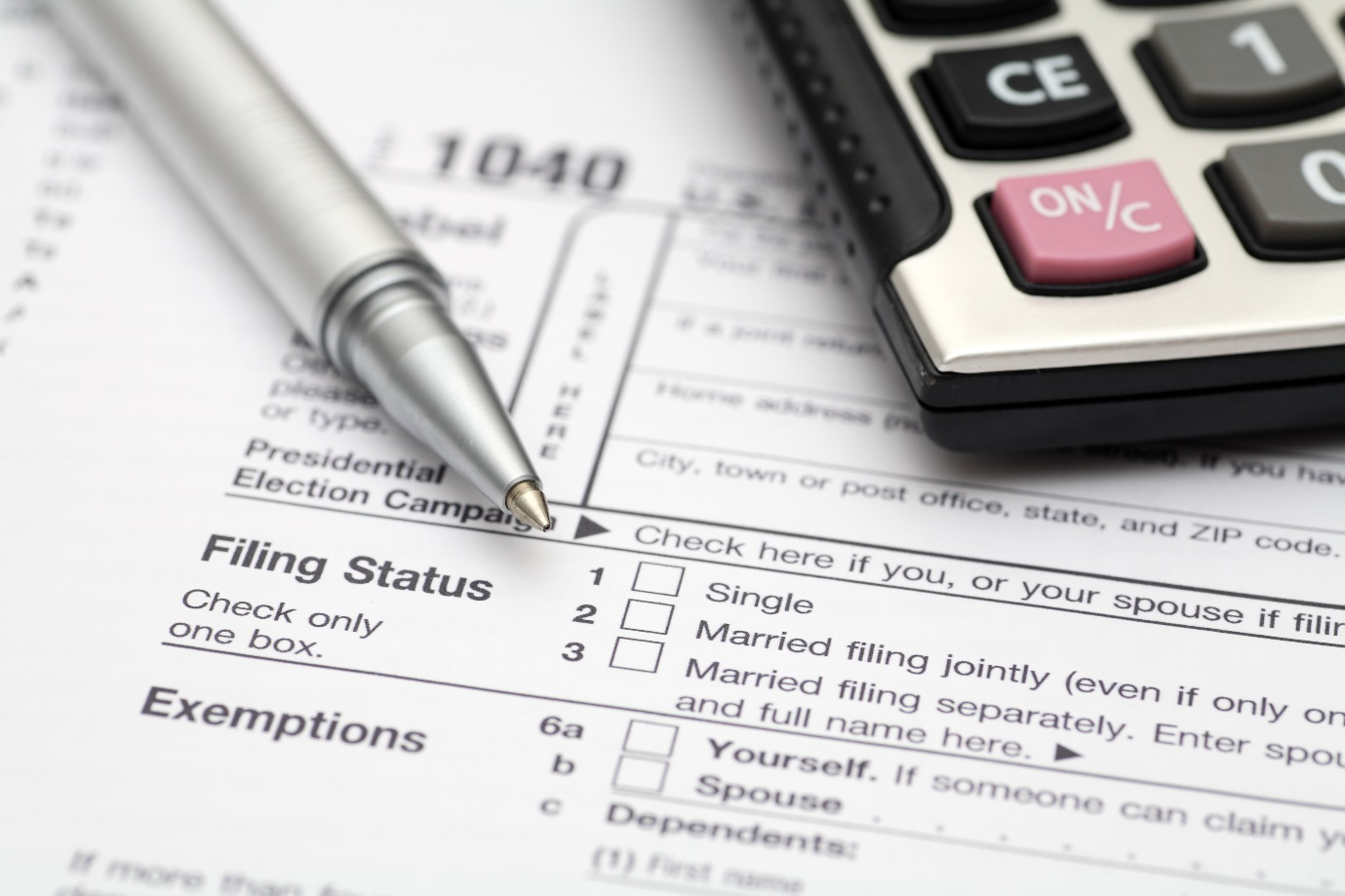Written by
Updated :
Reviewed by
The Goods and Services Tax, or GST, is a tax levied on various goods and services supplied in India. In order to ensure that a GST registered entity does not pay excess tax, the GST Act contains various provisions including the process of GST Refund. In order to benefit from this, one needs to have clear understanding of what is meant by GST refund, when one can claim it and how to claim GST refund. Read on to know get details of how refunds under GST work.
What is a GST Refund?
A GST refund a process where registered taxpayers claim a pay-out from tax authorities if they have paid Goods and Services Tax in excess of the actual tax liability. In order to claim the due refund, the GST registered entity has to mandatorily file a refund application.
The refund application under current GST rules differs based on the type of type of excess tax payment that was made. The most common type of GST refund is made using the form GST RFD-01. However, international organizations/Embassies seeking GST refund are required to use the form RFD-10. In the subsequent section, let’s take a closer look at key instances when a GST refund can be claimed.
When Can GST Refund Be Claimed?
There are various instances when a GST-registered entity is eligible to claim a refund on the Goods and Services Tax that has been paid. Key instances of this include the following:
If there is excess balance in the electronic cash ledger
GST paid on export of goods/services
GST paid on the supply of goods/services to a Special Economic Zone (SEZ)
Tax paid on supply of nil-rated items under GST
Refund provided as a result of court order, decree or judgement
GST paid by an Embassy or international organization such as the United Nations
Excess GST paid as a result of mistake/omission at the time of filing
The above list of reasons for filing for GST refunds in not exhaustive and there may be other instances when one is eligible to claim a refund from the relevant tax authorities. The details of this can be found on the official GST website.
Key GST Refund Forms in India
There are numerous GST forms that pay different roles in the GST refund process. Below are the key GST Refund forms you should know about when planning to apply for your GST refund:
1. Form GST RFD 01
The GST RFD 01 is the refund application that has to be used by most GST-registered entities to claim excess tax paid from tax authorities. Under current GST rules, the RFD-01 form has to filed online via the GST portal and allows taxpayers to claim refunds in various cases including the following:
Refund for excess balances in an electronic cash ledger
Excess tax payments
Accumulated Input Tax Credit (ITC) from excess payments
Refund from appeal or provisional assessments
Form GST RFD 01 requires individuals to include personal details and supporting documents to support their refund claims. The form must be certified under a chartered accountant prior to submission.
2. Form GST RFD 02
The second GST refund form that one encounters after applying for a GST refund is GST RFD 02. RFD-02 is an auto-generated form that serves as an acknowledgement that your RFD-01 form has been submitted successfully.
3. Form GST RFD 03
The third key form in the GST refund process is Form GST RFD 03. This form is generated by the GST portal after RFD-02 only if there is an error or deficiency in the RFD 01 refund claim submitted. Based on the errors indicated in RFD-03, the GST refund applicant can make the required corrections and resubmit RFD 01.
Investment Articles
- Benefits of ULIP Investment Plan
- Types of ULIPs
- How to Save Tax with ULIPs
- Maximize Returns With ULIPs
- Best Short Term Investments for Tax Saving
- What is Power of Compounding
- What is Investment
- Types of Investment in India
- 80C Investment Options
- Fixed Deposit Interest Rates
- Voluntary Provident Fund
- Difference Between Saving And Investing
- What is Fixed Deposit
- What is Term Deposit
- What is Recurring Deposit
- Fixed Deposit vs Recurring Deposit
- What is KYC
- Max Life Guranteed Income Plan
- What is ULIP
4. Form GST RFD 04
The fourth form in the GST refund application is the RFD-04. This is a provisional refund sanction order which specifies the amount of refund that will be provided on a provisional basis to the applicant. Typically, RFD-04 is generated within 7 days of issue of the RFD-02 and the provisional refund amount is 90% of the GST refund amount claimed in RFD-01.
5. Form GST RFD 05
The GST refund form RFD-05 is generated as a payment advice which contains key details such as amount of GST refund claimed, inadmissible refund amount (along with reason), deductions based on outstanding demand amount, net GST refund amount, etc. Others details one can see in RFD-05 include the bank account details of the refund applicant.
6. Form GST RFD 06
The RFD-06 is commonly known as the final refund order. It is issued by the assessing officer in response to acceptance or rejection of the claim made using RFD-01 and the supporting documents submitted. Not only does it contain the final amount being issued as GST refund but also details of any deductions made based on outstanding demands by tax authorities.
7. Form GST RFD 07
This form is only issued when the refund is withheld by the tax authorities. RFD-07 has two parts. Part A contains details of refund claimed, adjustments, balance GST refund amount, etc. Whereas, RFD-07 Part B contains details of grounds on which the refund is being withheld by the tax authorities.
8. Form GST RFD 08
Form GST RFD 08 offers payment advice or a Notice Form under a taxpayer’s refunds and is issued by a tax official.
9. Form GST RFD 09
This form is issued in cases where a refund is delayed on the tax official’s end and allows a taxpayer to submit an order for interest form to receive compensation for late payments.
10. Form GST RFD 10
Finally, Form GST RFD 10 is used only for refund applications for embassies or international organisations looking to claim GST refunds.
How to Claim GST Refund Online
Now that you’re familiar with the various forms common during the GST refund process, it’s essential to know the step-by-step procedure of how to submit a GST refund claim. The key steps of this process are as follows:
1. Individual taxpayers log on to the GST Portal, where they’ll find a ‘Services’ tab. Once a taxpayer locates this tab, they can select Refunds:

2. On the subsequent page, one has to select the reason for applying for GST refund. After selecting the reason for applying for a refund, individuals can click on the ‘Create refund application’ option as shown below:

3. Next, individuals will provide essential information for the application, including the period to apply for a refund (by financial year and month) and a prompt to select whether the individual wants to file a nil refund. Other details would include the extra tax paid, how much refund is being claimed, the details of registered bank account for GST refund credit, etc.
4. Once the required details have been provided and all supporting documents have been uploaded, the applicant can then submit the RFD-01 using an Electronic Verification Code (EVC) or a Digital Signature Certificate (DSC). After this, the GST Portal issues a unique ARN (Application Reference Number) that you should save for your records.
Is There a Time Limit for Taking the GST Refund?
Yes, an individual claiming the GST refund must file the application within two years from the ‘relevant date’ found in the explanation of section 54 of the CGST/SGST Act. There is however no such time limit for claiming refund in the case of cash available in the electronic ledger. The “relevant date” applicable a few specific instances for GST refund are as follows:
Reason for Refund |
Relevant Date |
GST Refund for deemed exports |
Date on which GST return for the deemed export was furnished |
GST Refund for export of goods |
Date on which exported goods crossed the frontier/were leaded on ship or aircraft/date of dispatch from Post Office |
GST Refund for export of services |
Date on which payment/advance payment is received |
Refund due to court order/judgement |
The date on which court order is communicated |
The above examples are illustrative and one needs to go through Section 54 of the CGST/SGST Act in detail to understand how the relevant date can vary on a case by case basis.
How to check Status of GST Refund?
The status of your GST refund can be easily checked online via the official GST Portal. Below is the Step by step process for checking current GST refund status online:
Step 1. Go to the GST Portal and Click on Refunds under Service menu on the website home page. Then click on “Track Application Status” link as shown below:

Step 2. After clicking on the link, you will be redirected to the subsequent page where you need to provide the ARN (Application Reference Number) generated at the time of RFD-01 submission and select “Refunds” from the dropdown menu as shown below:

Step 3. After providing the above information, click on “Search” to view the current status of your GST refund application. The GST refund status application would look something like this:

Based on the above you can decide any and all action that might be required to be completed in order to receive your due GST Refund.
Frequently Asked Questions FAQs
Q. What is a refund as per the GST Act?
A. As per Section 54 of the CGST/SGST Act, refund under GST can include the following:
Any balance amount available in the electronic cash ledger after filing GST return
Any unutilized input tax credit such as nil-rated supplied without tax payment/tax paid for input exceeding tax liability on output, etc.
Tax paid on any inward supplies by an embassy, consulate or an institution covered under the United Nations Privileges and Immunities Act, 1947
In all the above cases, the eligible entity or institution can seek GST refund on the excess tax paid.
Q. What is the time limit for claiming a refund under GST?
A. In most cases, an eligible refund claim under GST can be submitted within 2 years of the relevant date. The definition of relevant date is mentioned in Section 54 of the CGST/SGST Act and can vary based on the type of supply that has been made.
Q. What is the minimum amount for receiving a GST refund?
A. The threshold amount for claiming a refund under GST is Rs. 1000. For smaller amounts, the excess GST paid is reflected as balance in the electronic cash ledger and can be utilized to offset future GST liabilities by the GST-registered entity.
Q. Can a refund claim be rejected without any reason?
A. No. If the refund claimed under GST is rejected by the assessing officer, suitable reason for rejection must be provided in the form GST RFD-08 to the applicant.
Q. What is the amount of provisional refund and how soon does it have to be provided?
A. The provisional refund amount under GST is up to 90% of the refund amount claimed for nil-rated goods that has been submitted by the applicant. As per current GST rules, provisional refund needs to be provided within 7 days of the date of acknowledging the completed refund claim application.
Sources:
https://www.bajajfinserv.in/insights/gst-refund-process
https://www.indiafilings.com/learn/how-to-get-gst-refund/
https://irisgst.com/form-gst-rfd-05-payment-advice/
https://cbic-gst.gov.in/aces/Documents/draft-refund-formats-26092016.pdf
https://tutorial.gst.gov.in/userguide/refund/index.htm#t=Application_for_Refund_manual.htm
https://taxguru.in/goods-and-service-tax/time-limit-refund-application-gst.html
https://tutorial.gst.gov.in/userguide/refund/index.htm#t=Track_Refund_Status.htm
ARN No:June23/Bg/21C


